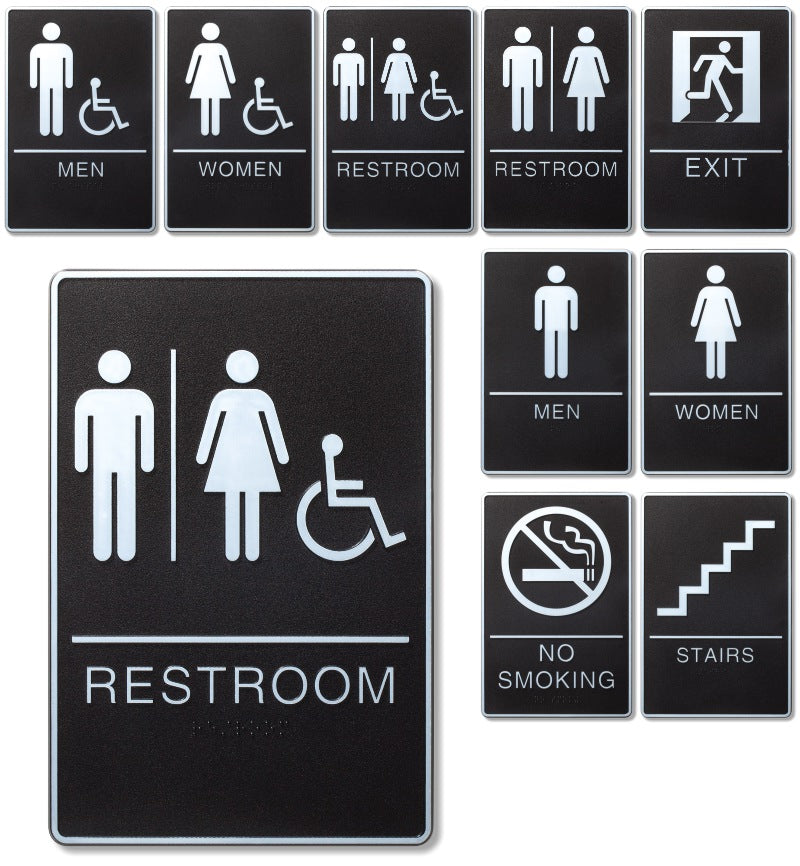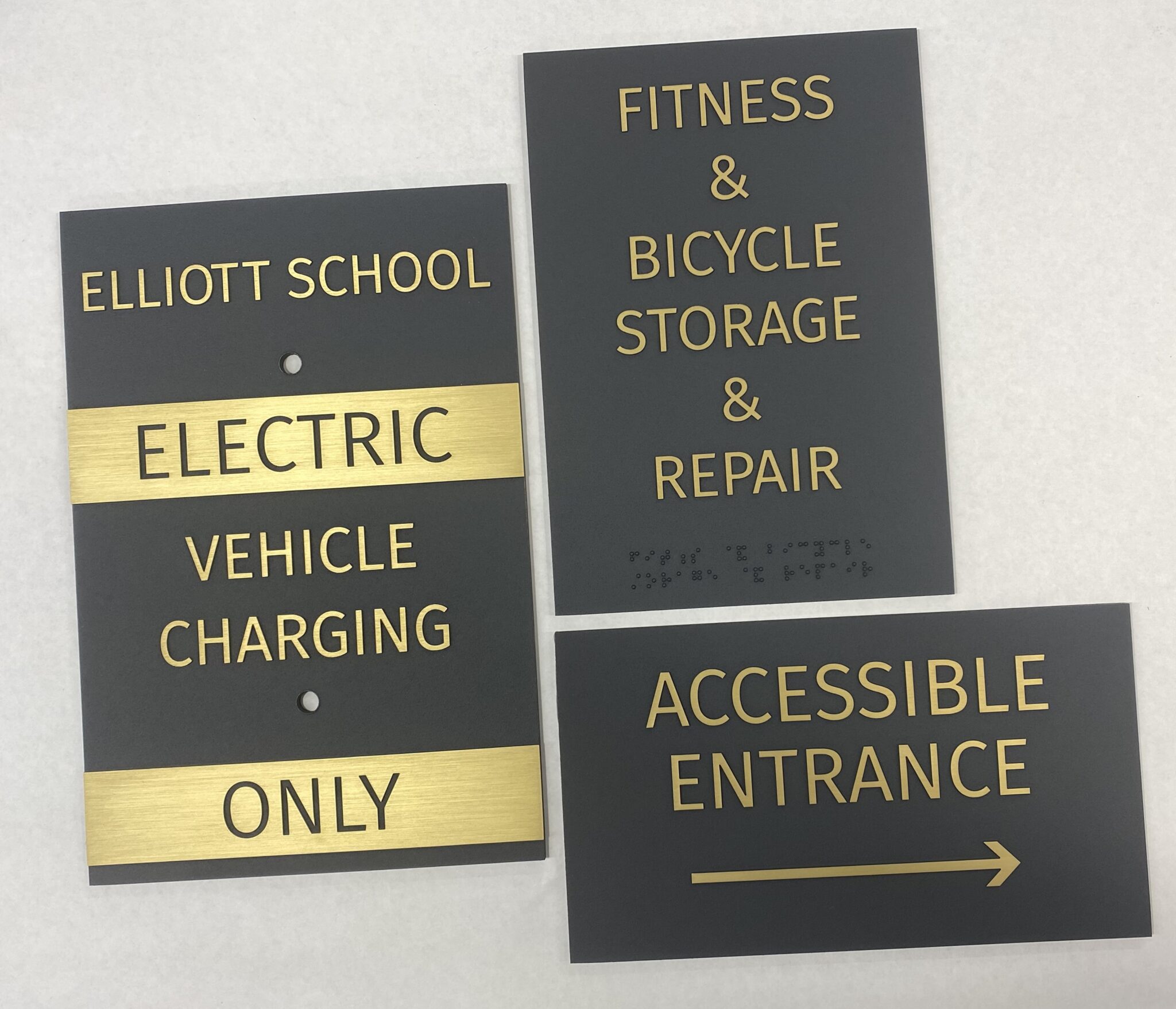Tailoring ADA Signs to Fulfill Your Certain Requirements
Tailoring ADA Signs to Fulfill Your Certain Requirements
Blog Article
Checking Out the Secret Functions of ADA Signs for Improved Access
In the world of access, ADA signs act as quiet yet effective allies, guaranteeing that spaces are accessible and comprehensive for people with handicaps. By incorporating Braille and responsive components, these indicators damage obstacles for the aesthetically impaired, while high-contrast color design and clear font styles accommodate diverse visual needs. Additionally, their calculated placement is not arbitrary however rather a calculated initiative to assist in seamless navigating. Yet, past these attributes lies a deeper story concerning the advancement of inclusivity and the continuous dedication to producing fair areas. What much more could these signs represent in our search of universal accessibility?
Relevance of ADA Conformity
Guaranteeing conformity with the Americans with Disabilities Act (ADA) is vital for fostering inclusivity and equivalent gain access to in public rooms and workplaces. The ADA, passed in 1990, mandates that all public centers, employers, and transport solutions accommodate individuals with handicaps, guaranteeing they delight in the very same civil liberties and chances as others. Conformity with ADA standards not just meets legal responsibilities but additionally enhances an organization's online reputation by demonstrating its commitment to diversity and inclusivity.
One of the essential aspects of ADA compliance is the implementation of easily accessible signage. ADA indicators are made to ensure that individuals with specials needs can conveniently browse through spaces and buildings. These signs must stick to certain standards regarding dimension, typeface, shade comparison, and positioning to guarantee presence and readability for all. Properly applied ADA signs helps get rid of obstacles that people with specials needs usually run into, consequently advertising their self-reliance and confidence (ADA Signs).
In addition, sticking to ADA policies can minimize the danger of prospective fines and lawful consequences. Organizations that fail to adhere to ADA standards may face fines or claims, which can be both financially burdensome and harmful to their public photo. Thus, ADA conformity is essential to cultivating an equitable atmosphere for everyone.
Braille and Tactile Aspects
The consolidation of Braille and responsive components into ADA signs personifies the concepts of accessibility and inclusivity. It is normally positioned underneath the corresponding text on signs to ensure that individuals can access the details without visual support.
Responsive aspects expand past Braille and consist of increased signs and characters. These elements are developed to be discernible by touch, allowing people to recognize room numbers, washrooms, exits, and various other vital areas. The ADA sets particular guidelines regarding the size, spacing, and placement of these responsive components to enhance readability and make sure consistency across different settings.

High-Contrast Shade Plans
High-contrast color systems play an essential role in improving the visibility and readability of ADA signs for individuals with visual problems. These plans are necessary as they optimize the difference in light reflectance in between text and history, guaranteeing that signs are quickly discernible, even from a range. The Americans with Disabilities Act (ADA) mandates making use of specific shade contrasts to accommodate those with restricted vision, making it an important facet of conformity.
The efficiency of high-contrast colors exists in their ability to attract attention in various illumination conditions, including poorly lit environments and locations with glow. Usually, dark text on a light background or light message on a dark background is employed to accomplish optimal comparison. Black message on a yellow or white background offers a plain aesthetic difference that assists in quick acknowledgment and understanding.

Legible Fonts and Text Dimension
When considering the design of ADA signage, the choice of legible fonts and ideal visite site text dimension can not be overstated. The Americans with Disabilities Act (ADA) mandates that font styles should be sans-serif and not italic, oblique, manuscript, very attractive, or of unusual type.
The dimension of the message additionally plays a crucial function in accessibility. According to ADA guidelines, the minimum message height must be 5/8 inch, and it must boost proportionally with watching range. This is particularly vital in public rooms where signage needs to be reviewed promptly and precisely. Uniformity in text size adds to a cohesive aesthetic experience, aiding people in browsing settings successfully.
Furthermore, spacing in between lines and letters is important to readability. Adequate spacing protects against personalities from showing up crowded, improving readability. By adhering to these standards, designers can dramatically improve ease of access, ensuring that signage offers its designated objective for all individuals, despite discover this their visual capacities.
Effective Placement Methods
Strategic placement of ADA signs is important for optimizing availability and making certain conformity with legal requirements. ADA standards specify that indications ought to be placed at a height between 48 to 60 inches from the ground to ensure they are within the line of view for both standing and seated people.
Furthermore, indicators have to be put beside the latch side of doors to permit very easy identification prior to entry. This positioning helps people find areas and areas without obstruction. In situations where there is no door, indications must be positioned on the nearby nearby wall surface. Consistency in indicator placement throughout a facility enhances predictability, decreasing complication and improving total individual experience.

Conclusion
ADA indications play an essential function in advertising accessibility by integrating features that resolve the demands of people with disabilities. Incorporating Braille and responsive aspects makes sure vital information is obtainable to the aesthetically impaired, while high-contrast color design and legible sans-serif typefaces improve exposure across numerous lights conditions. Reliable positioning techniques, such as ideal placing heights and tactical locations, additionally assist in navigation. These elements you could try here collectively cultivate an inclusive setting, underscoring the relevance of ADA conformity in ensuring equal accessibility for all.
In the world of ease of access, ADA indications offer as silent yet powerful allies, ensuring that rooms are comprehensive and navigable for individuals with handicaps. The ADA, enacted in 1990, mandates that all public centers, companies, and transportation solutions fit people with specials needs, ensuring they delight in the very same civil liberties and chances as others. ADA Signs. ADA signs are developed to ensure that individuals with impairments can easily navigate via structures and rooms. ADA standards stipulate that indications should be placed at an elevation between 48 to 60 inches from the ground to guarantee they are within the line of view for both standing and seated people.ADA indications play a vital duty in advertising ease of access by integrating attributes that address the requirements of people with impairments
Report this page